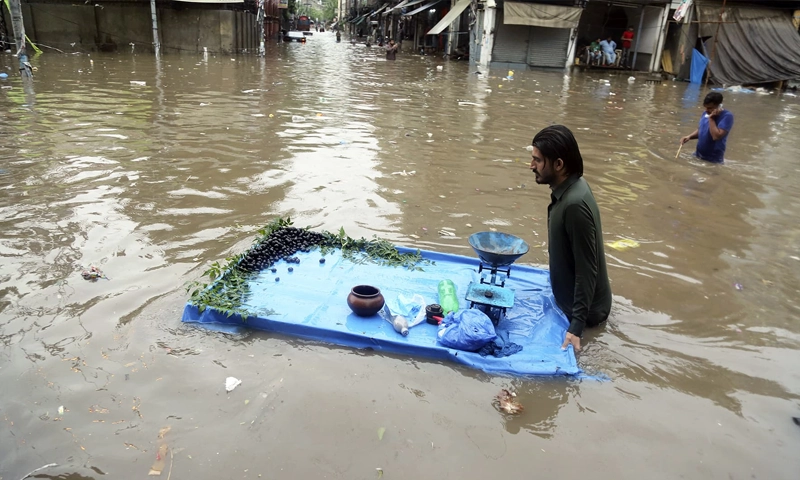- Web Desk
- 22 Minutes ago
Eastern and central Punjab feel the brunt of monsoon low
-
- Web Desk
- Jul 15, 2025

ISLAMABAD: Bahawalnagar received 86mm of rain, the highest during the past 24 hours according to the official data, as a monsoon low pressure currently over lying over north Rajasthan is expected to bring heavy to very heavy rainfall in different parts of Pakistan.
Latest satellite images at 7pm on Tuesday showed dark clouds stretching from Sahiwal in Pakistan to Bikaner in India, while thick cloud cover is also visible over northeastern Punjab and parts of adjoining Kashmir.
Read more: 111 monsoon-related deaths in Pakistan since late June: NDMA
According to the PMD latest update, heavy to very rains may trigger flash floods in the hilly/mountainous areas of Punjab, Kashmir, Khyber Pakhtunkhwa and northeastern Balochistan from July 15 (Tuesday evening) to 17 (Friday).
On the other hand, it has also warned about urban flooding in places like Islamabad, Rawalpindi, Faisalabad, Lahore, Sialkot, Multan, Bahawalpur, Peshawar and Mardan during the same period.
The forecast for Wednesday and Thursday say widespread rain-wind/thundershower is expected in Punjab, Islamabad, Khyber Pakhtunkhwa, Kashmir, while at scattered places in northeast/south Balochistan, southeast/upper Sindh and Gilgit-Baltistan.
Scattered heavyfalls (at times very heavy) are likely in Punjab, Islamabad, upper Khyber Pakhtunkhwa, Kashmir and northeast Balochistan.
Meanwhile, heavy rain started lashing Lahore around 11pm as clouds moving in from east started getting thicker over Kasur, Okara, Sheikhupura and further down south towards Bahawalpur.
Similarly, the northeast corner of the province including Narowal and Sialkot is also receiving downpour, as rain is also expected in central Punjab in the coming hours.
As far as Islamabad and Rawalpindi are concerned, the twin cities are expected to start getting drenching rain/thunderstorm in early hours of Wednesday.
ABSENT CIVIC INFRASTRUCTURE
Absence of civic infrastructure means heavy rains paralyse the urban centres in Pakistan.
With rains getting more intense thanks to climate change, urban infrastructure – especially sewerage and public transport – through holistic town planning should be the government focus. However, it isn’t the case, unfortunately.
In some cases, even light or moderate rains are enough to cripple daily life. Karachi is an example. Now add the climate change to the equation, with Pakistan being one of the worst affected countries.
Gilgit-Baltistan is an example where persistent high temperatures have caused rapid melting of glaciers, leading to increased water levels in rivers and streams, flash floods, and landslides.
The region is is home to over 13,000 glaciers, more than any other region in the world outside the polar regions, which are a vital source of fresh water, supplying approximately 70 per cent of Pakistan’s fresh water.
However, the recent heatwaves are causing the glaciers to melt at an accelerated rate.





